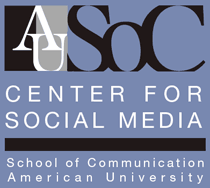Using Copyrighted Material
The below guide is a code of best practices
that can help you interpret the copyright doctrine of fair use. Fair use is the
right to use copyrighted material without permission or payment under some
circumstances.

www.centerforsocialmedia.org
Code of Best Practices in Fair Use for Online Video
Description:
Principle:
Limitations:
Principle:
Limitations:
TWO: USING
COPYRIGHTED MATERIAL FOR ILLUSTRATION OR EXAMPLE
Description: Hollywood films might be used to demonstrate changing American attitudes toward
race; a succession of photos of the same celebrity may represent the stages in
the star’s career; a news clip of a politician speaking may reinforce an
assertion.
Principle:
Limitations:
Principle:
Limitations:
THREE: CAPTURING
COPYRIGHTED MATERIAL INCIDENTALLY OR ACCIDENTALLY
Description:
Principle:
Limitations:
Principle:
Limitations:
FOUR: REPRODUCING,
REPOSTING, OR QUOTING IN ORDER TO MEMORIALIZE, PRESERVE, OR RESCUE AN
EXPERIENCE, AN EVENT, OR A CULTURAL PHENOMENON
Description:
Principle:
Limitations:
Principle:
Limitations:
Description:
Principle:
Limitations:
Principle:
Limitations:
SIX: QUOTING IN ORDER TO RECOMBINE
ELEMENTS TO MAKE A NEW WORK THAT DEPENDS
FOR ITS MEANING ON (OFTEN UNLIKELY) RELATIONSHIPS BETWEEN THE ELEMENTS
Description:
Principle:
Limitations:
Principle:
Limitations: